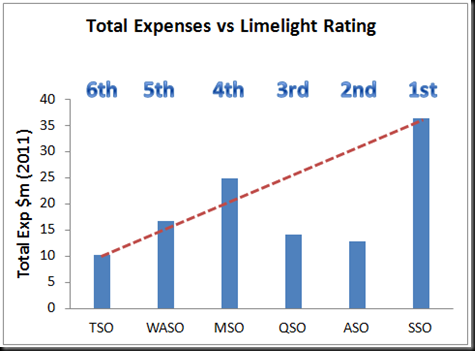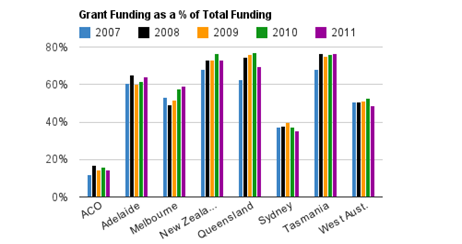As I related here I’ve been having some issues getting hold of an MSO 2013 program guide – they’re loathe to provide a pdf document online, preferring instead to go all retro and send one through the mail. This finally arrived today – I feel like sending someone a thankyou fax, or possibly a telegram.
Anyway, my surprise at their choice of delivery channel was nothing compared to my surprise at the results when I crunched the numbers. In common with the ASO, the MSO repertoire safety index has plunged, going from 7.0 to 5.7, with a lot more big names and their warhorses being trotted out. This isn’t particularly surprising, as the index tends to bounce around from year to year, but what was really astounding was the % of the MSO 2013 program composed by Australians….2%. Surely I’m missing something! Did that bit of the program get lost in the mail?* They’ve got a reasonable % of pieces composed by living writers (15%), but where’s the local talent? As the following table shows, the MSO are now squarely in WASO territory as far as this metric is concerned:
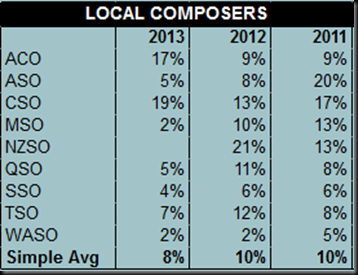
As for the rest of it, the plunge in the MSO and ASO safety index numbers needs to be put in the context of a remarkable leap in the QSO rating. The playlist factor – which endeavours to assess what % of orchestra programs appear on those top 100/top 200/top whatever lists that abound on the web – behaves inversely to the safety index, as you’d expect.
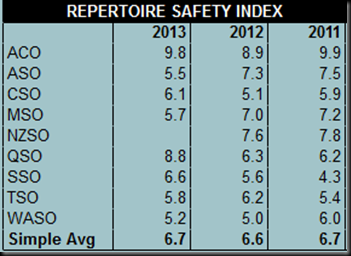
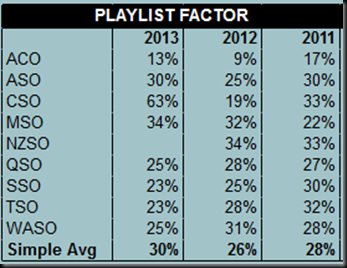
Finally, the MSO manages a reasonable 15% on the”live music” score (i.e. music composed by people who are still with us):
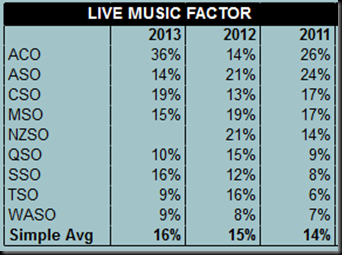
Notwithstanding all this, the MSO deserves some kudos for including Conlon Nancarrow in its list. He’s not Australian, and he doesn’t add to the live music factor (d. 1997), but as the author of numerous studies for player piano (e.g. here) I feel he warrants a tip of the hat, as here is some piano music I feel I could get to grips with.
* To be fair, the MSO did sneak a couple of locally made pieces into one of their Sidney Myer outdoor concerts – Edwards’ Full Moon Dances (which I saw last year, and is a terrific piece of music), and Broadstock’s Federation Flourish (which I don’t know at all). Including these would have lifted them to a still-anaemic 4%, but in any event I exclude free concerts from these listings as ultimately I’d like to look for the correlation between ticket sales and program content.


